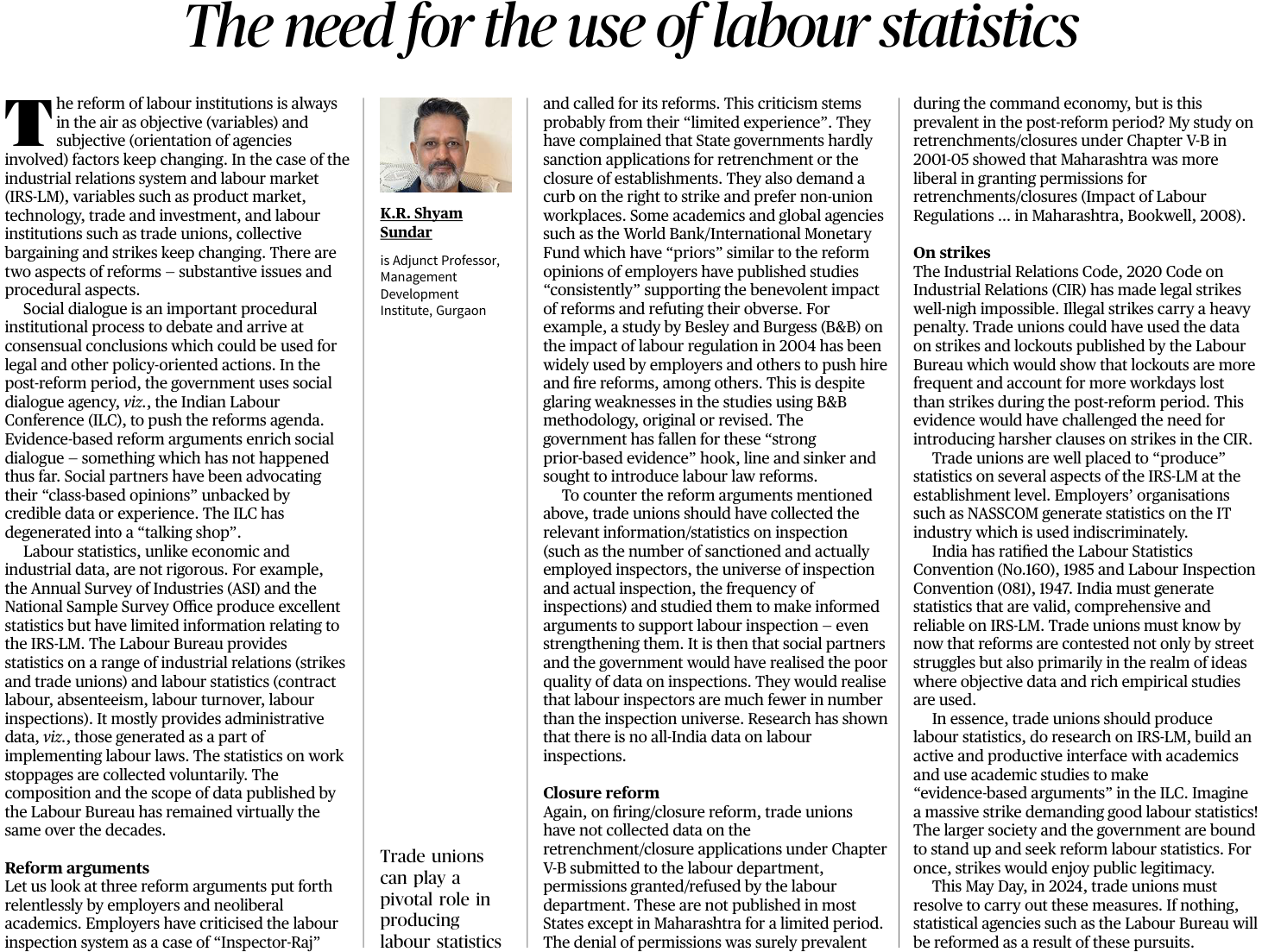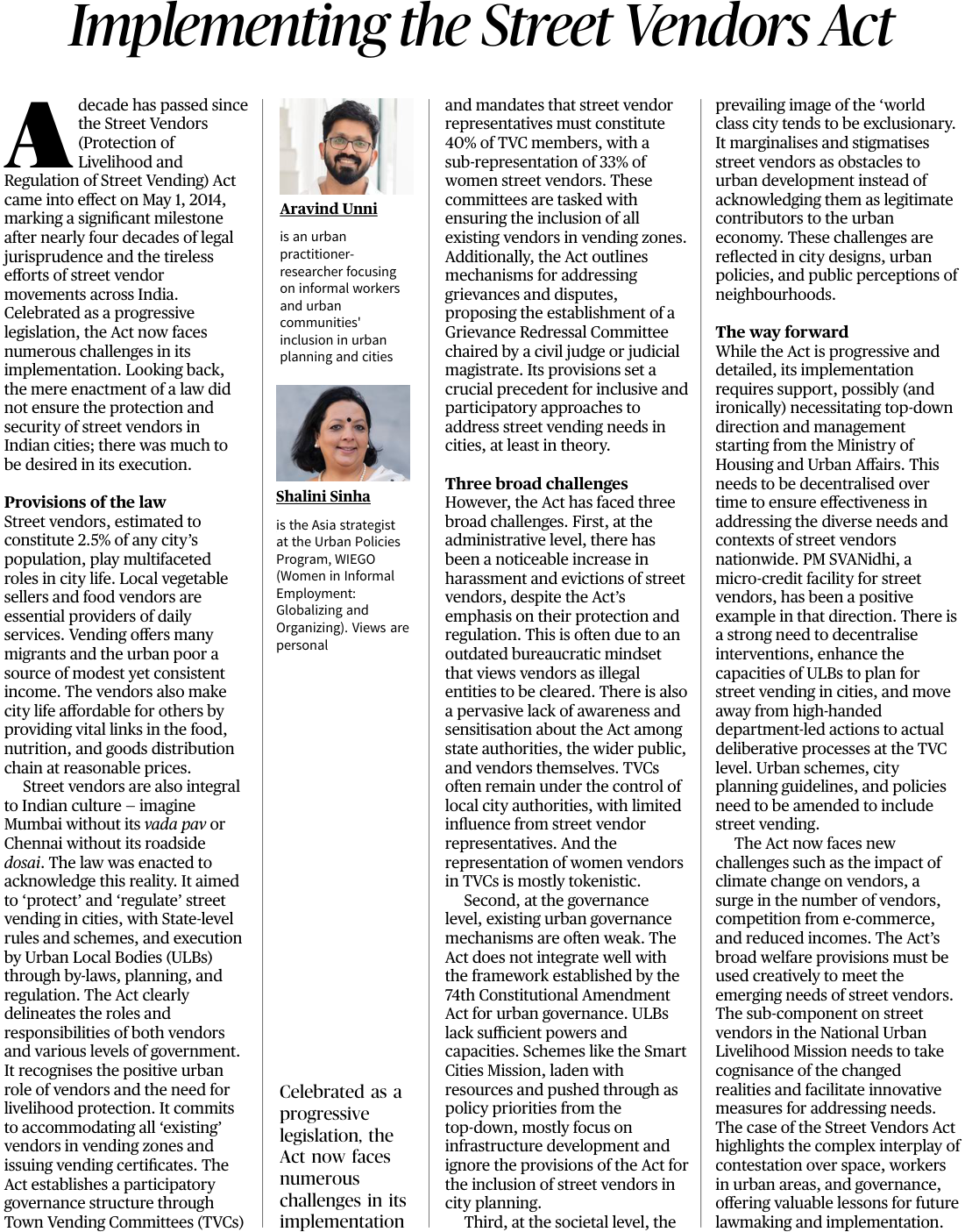 |
|||
| Editorial Analysis
1 May 2024 |
|||
|
Evolution and Future of Immunization Programs

Introduction;
- The year 2024 marks the 50th anniversary of the Expanded Programme on Immunization (EPI), a pivotal initiative launched by the World Health Organization (WHO) in 1974.
- This note analyzes the trajectory of immunization programs globally and specifically in India, highlighting achievements, challenges, and the evolving focus on vaccination across all age groups.
Progress and Achievements;
- Over the past five decades, immunization programs have made significant strides globally and in India.
- The number of recommended vaccines has increased from 6 to 13 universally recommended and 17 context-specific ones.
- Vaccination coverage, particularly measured by DPT doses, has risen substantially, contributing to the eradication of smallpox and near-elimination of various diseases.
- Economically, vaccines have proven highly cost-effective, with substantial returns on investment.
Challenges and Inequities;
- Despite successes, challenges persist.
- UNICEF’s 2023 report revealed a decline in childhood immunization coverage for the first time in over a decade, with millions of children not receiving recommended vaccines globally.
- In India, while overall coverage has improved, significant disparities persist based on geography, socioeconomic factors, and other parameters, necessitating urgent interventions.
Shifting Focus to Lifelong Immunization;
- Historically, vaccines primarily targeted children, but with improved coverage, attention must now extend to adults and the elderly.
- Policy discussions are underway to expand immunization coverage beyond childhood, acknowledging the rising prevalence of vaccine-preventable diseases in adult populations.
- Recommendations include making adult vaccines available for free at government facilities, addressing vaccine hesitancy through proactive communication strategies, leveraging medical professionals and institutions for awareness, and generating evidence on disease burdens in adults.
Future Directions and Recommendations;
- India’s recent initiatives, such as adult BCG vaccination and COVID-19 vaccination drives, underscore the importance of adult immunization.
- The note advocates for an expansion of the EPI, encompassing zero dose children, tackling inequities, and prioritizing adult and elderly vaccination.
- It calls for a comprehensive review of the UIP, involving key stakeholders and international experts, to pave the way for an “Essential Program on Immunization.”
Conclusion;
While the EPI has achieved remarkable success in its 50-year journey, the evolving landscape of diseases and demographics necessitates a paradigm shift towards lifelong immunization, ensuring equitable access to vaccines across all age groups.
Reforms in Labour Institutions

Introduction;
- Reforming labour institutions is a perpetual endeavor influenced by dynamic objective and subjective factors.
- This note explores the challenges and potential avenues for reform within the industrial relations system and labour market (IRS-LM), focusing on substantive issues and procedural aspects.
Dynamic Variables and Changing Labour Institutions;
- Variables such as product market dynamics, technological advancements, trade patterns, and investment trends continually reshape the IRS-LM.
- Concurrently, labour institutions like trade unions, collective bargaining mechanisms, and strike regulations evolve in response to these shifts.
The Role of Social Dialogue;
- Social dialogue serves as a vital procedural mechanism for consensus-building in policy formulation.
- However, the efficacy of institutions like the Indian Labour Conference (ILC) has diminished due to a lack of evidence-based arguments and reliance on outdated class-based opinions.
Limitations in Labour Statistics;
- Labour statistics lag behind economic and industrial data in rigor and comprehensiveness.
- Existing sources like the Labour Bureau provide primarily administrative data, offering limited insights into the IRS-LM dynamics.
- Moreover, there is a lack of comprehensive data on crucial aspects such as labour inspections and retrenchment/closure applications.
Reform Arguments and Countermeasures;
- Employers and neoliberal academics advocate for labour reforms, citing concerns such as the “Inspector-Raj,” restrictions on retrenchment/closure, and curbs on strikes.
- However, trade unions can challenge these arguments by gathering relevant data and conducting empirical studies to support their stance.
- For instance, comprehensive statistics on labour inspections and retrenchment/closure applications can highlight the need for strengthening labour regulations rather than diluting them.
The Imperative for Evidence-Based Advocacy;
- Trade unions must shift towards evidence-based advocacy by producing comprehensive labour statistics, conducting research on IRS-LM dynamics, and fostering collaboration with academic institutions.
- This approach can empower trade unions to make informed arguments in forums like the ILC, garnering public support and driving meaningful reforms.
Conclusion;
On this May Day in 2024, trade unions are urged to prioritize the production of robust labour statistics, engage in empirical research, and advocate for evidence-based policies. By doing so, they can catalyze reforms not only in labour institutions but also in statistical agencies like the Labour Bureau, ultimately advancing the interests of workers in the evolving labour landscape.
Challenges and Prospects of Implementing the Street Vendors Act

Introduction;
- A decade has passed since the enactment of the Street Vendors (Protection of Livelihood and Regulation of Street Vending) Act in 2014, a significant milestone in recognizing and regulating the vital role of street vendors in Indian cities.
- While celebrated as a progressive legislation, the Act faces multifaceted challenges in its implementation, hindering the protection and security of street vendors.
Provisions of the Law;
- The Act aims to protect and regulate street vending in cities, delineating roles and responsibilities for vendors and various levels of government.
- It establishes participatory governance structures through Town Vending Committees (TVCs) and mandates accommodation of existing vendors in vending zones.
- Despite its progressive provisions, the Act encounters challenges at administrative, governance, and societal levels.
Challenges;
1. Administrative Challenges: Street vendors face harassment and evictions, reflecting an outdated bureaucratic mindset and lack of awareness about the Act. TVCs often lack genuine representation and influence, exacerbating issues of harassment and eviction.
2. Governance Challenges: Weak urban governance mechanisms and lack of integration with existing frameworks hinder effective implementation. Top-down urban schemes prioritize infrastructure over inclusivity, neglecting provisions for street vendors in city planning.
3. Societal Challenges: Exclusionary perceptions of ‘world-class cities’ marginalize street vendors, hindering their recognition as legitimate contributors to the urban economy. Such perceptions influence city designs, policies, and public attitudes towards street vending.
The Way Forward;
- Progressive as it is, effective implementation of the Act requires top-down support initially, decentralizing over time to address diverse local contexts.
- Initiatives like PM SVANidhi demonstrate positive steps towards decentralization.
- Capacities of Urban Local Bodies (ULBs) must be enhanced, and urban policies amended to integrate street vending.
- Additionally, emerging challenges such as climate change and e-commerce competition necessitate innovative use of the Act’s provisions to address evolving needs.
Conclusion;
The Street Vendors Act exemplifies the complex dynamics of urban governance and contestation over public space. Despite challenges, it offers valuable lessons for future legislation and implementation, emphasizing the importance of inclusive governance, awareness-building, and adaptation to changing urban realities.

